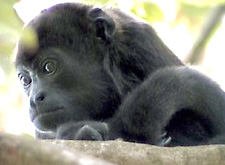
According to professor Mary Glenn, who runs the department’s Biological Anthropology Research Laboratory, programs like this are one way to discover what kind of anthropologist her students will become.
“It’s really important for anthropology majors to get hands on experience, especially if they’re going to grad school. It really gives them an edge up. It also helps them see and learn about the area of anthropology they’re interested in.”
This summer will be the first year Glenn and research associate Marissa Ramsier, along with wildlife biologist Keith Bensen and teaching assistant Kat Fountain, will be taking 20 students to the La Selva Biological Station in Coastal Rica.
Situated in the northeastern lowlands, 2 hours north of capital city San Jose, La Selva connects to the huge Braulio Carrillo National Park, which creates a biological corridor of mixed old growth and regenerating forest. These unique features make the area one of the top research spots in the world.
“This is one of the best field sites that I can think of and I’ve been to 45 countries. It’s a really posh site in terms of amenities and access to primates is phenomenal,” says Glenn.
The four-and-a-half week long course is open to all HSU students and qualifying students from other institutions. According to Glenn, the focus of the program is to explore two sides of the anthropology discipline: primatology, the study of primates, and also cultural anthropology through interaction with the people and customs of Costa Rica.
During the fieldwork, students will be divided into small groups, of around 5 people, who will work closely with the program’s instructors. Smaller groups tend to have greater mobility and can remain hushed enough to track members of the howler, spider, capuchin and owl monkeys found in La Selva.
Teaching assistant Kat Fountain, an anthropology senior focusing on primatology, spent last summer working in Costa Rica tracking the elusive primates.
“I've found that the key to finding the monkeys in an unpredictable forest is to never dismiss a crashing branch without looking for its source, and always to carry plenty of peanut butter and jelly sandwiches. The sandwiches help you get over the next hill when in hot pursuit of primates,” says Fountain.
With the deadline for applying to the Costa Rica Primate Field Program on Monday, January 28, 2008, the anthropology department is encouraging all interested students to apply.
For more information on the program, including visa and immunization requirements, and to download an application, visit the program’s web site.
Visit the Organization for Tropical Studies web site to learn more about the La Selva Biological Station.